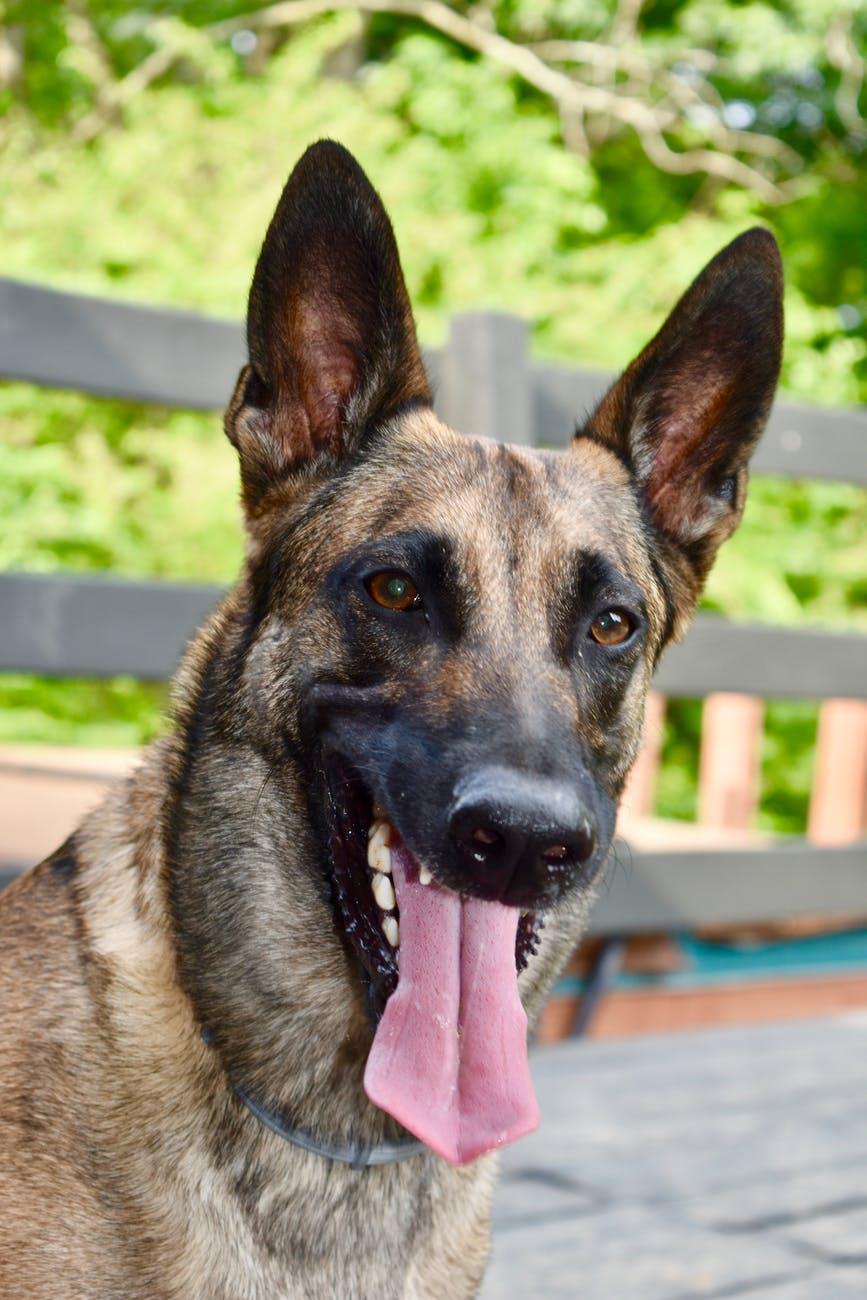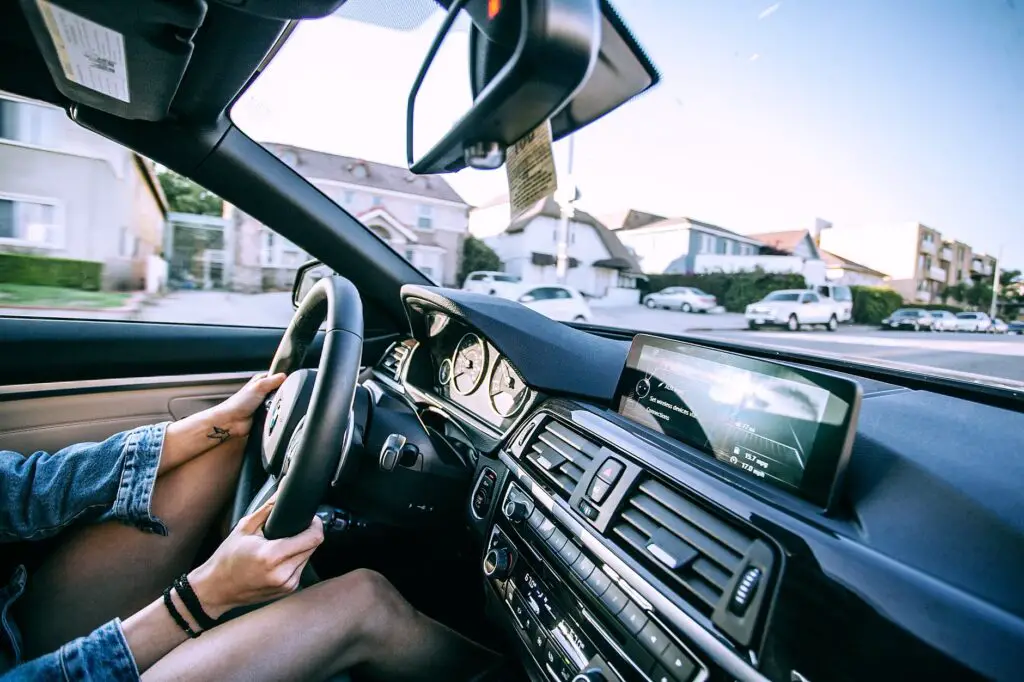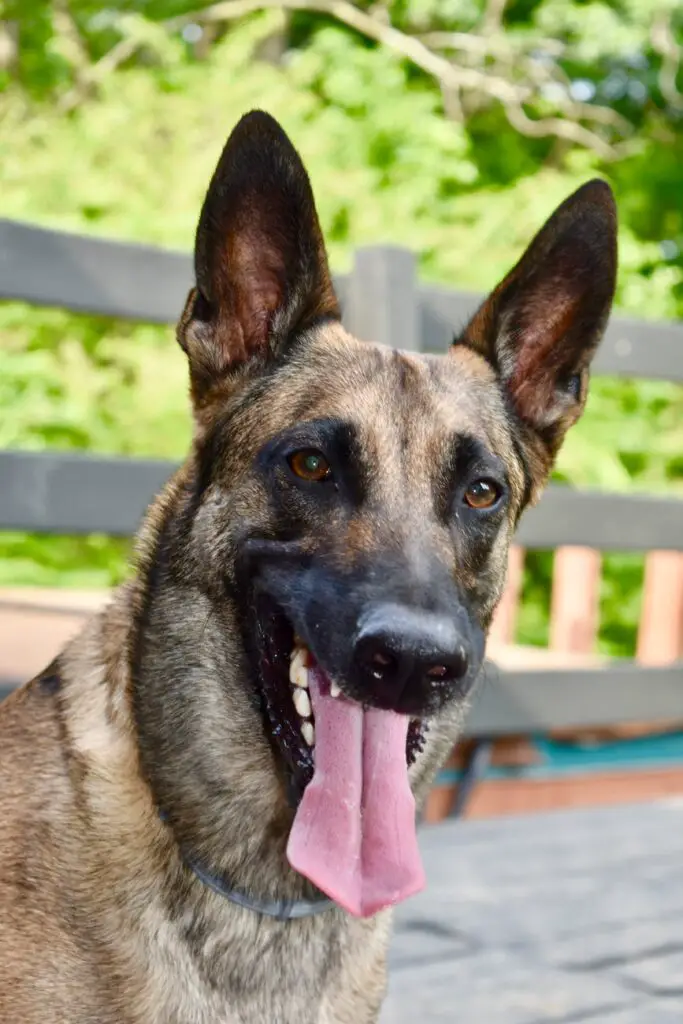Dogs exhibit all sorts of strange behaviors that may be difficult for owners to interpret correctly. Figuring out what’s normal; what’s just unique to that dog, and what requires further assistance to correct or cure is difficult, too.
We all want what’s best for our dogs, so it’s good to be curious or concerned about certain behaviors, especially when it only happens at specific times or when it manifests suddenly.
Having experienced this ourselves, we wanted to find out why do dogs pant in the car and should people be worried when it happens?
Why Do Dogs Pant?
Before we jump into dogs panting in the car, it’s important to understand why dogs pant in general. It could just be a coincidence that your dog pants in the car.
Dogs pant to regulate temperature. They don’t sweat like we do (although, they do sweat through their paws) but suck in the colder external air and pant out warmer internal air. The cooler air is circulated around the dog’s body which helps them to keep themselves at a comfortable temperature.
Panting also allows dogs to get extra oxygen into the bloodstream.
Dogs will also pant when they’re excited or over stimulated. You’ve probably seen this when a dog meets someone for the first time or when they see you take out their favorite toy.
Like us humans, dogs can also become breathless after vigorous exercise or rough play but this should be temporary.
Anxiety or stress can make a dog pant heavily.
Panting can also be a sign of illness, injury or a allergic reaction.
Dehydration can make dogs pant, too, as can heat exhaustion and heat stroke.

Why Does My Dog Pant and Shake in the Car?
One of the first things we’d try and rule out is anxiety about being in the car. It can be hard to imagine how strange riding inside a vehicle is for our pets. Your dog could be panting and shaking in the car because he or she is nervous. The smell inside the interior, the rumbling of the engine, the momentum of moving or even the texture of the rear seats can all send a dog into a fear response.
It may not just be panting or shaking, either, but whining, vomiting, urinating or drooling. Anxiety can also be caused by the dog associating the car with a bad memory. If the only time they go into the car is to the veterinarian, for example, then they’ll only have anxious thoughts when they get in. You can help your dog adjust to traveling in the car in a few simple steps which will include in the next section.
Your dog might also have motion sickness. The rocking motion of the car combining with the fast-moving scenery can cause nausea which can manifest as panting. This is relatively common in puppies as their balance hasn’t yet developed fully.
Dogs also pant in the car because they’re dehydrated. Traveling with your dog over long distances can make it harder for our pets to want to drink. We may also be distracted by the journey and less likely to notice subtle changes in our dog’s behaviour. It can be difficult to maintain a comfortable temperature that suits both humans and dogs on a road trip especially if you’re driving through arid terrain or long distance during the summer time. Dogs can also get dehydrated in the cold weather if they don’t have access to drinking water.
If the temperature is too hot in the car, then dogs will start panting to cool down. This can lead to heat exhaustion and even heat stroke. If this happens, park up somewhere shaded and try to bring their temperature down. Watch them very carefully and be prepared to take them to a veterinarian quickly.
Some dogs are just very excitable. This behavior may be prevalent outside the car, too. Favorite toys, places and people can all illicit a vigorous response from some dogs. Panting can be a sign of over excitement.
Something in the car could be worrying the dog and causing them to pant: a sound or a smell. It could even be a section of the back seat that they take issue with. Some dogs don’t like the space between the front seats and the back where a passenger would put their feet. To some dogs, it probably looks forbidding and scary.
Some breeds are more prone to panting because they have breathing difficulties – bulldogs, for example.
Excitement, anxiety, dehydration or motion sickness may make it harder for you to spot panting as a unique behavior so it’s important to pay closer attention to them during traveling.
How to Stop a Dog Panting in the Car
Make the Car a Calmer Place to Be
If it’s an anxiety issue, then spending time acclimatizing your dog to the car can help make future journeys more pleasant.
If the dog has poor associations with the car: only going in when there’s a veterinarian or groomer’s appointment, try taking them out to the dog park or to the beach or somewhere fun. You could even drive them to the house of their next-favorite human. You want to break up the negative association the dog has with the car. You may need to do this a few times. Once they’re a little less rattled it’s helpful to put a toy in with them or familiar smelling blankets.
Creating a nice environment will help make the car seem a less terrible place to be. You might also want to use a crate or a booster seat so that the dog has somewhere to feel secure and to retreat to.
If the anxiety seems to come more from the car itself than any negative association with a veterinarian etc, you can desensitise your dog with a little effort. This is also useful if you have a puppy and want them to feel comfortable being in a moving vehicle. You might want to start with leading them out to the car, walking them around it and then leaving the door open and letting them jump in. For these few times, until the dog is comfortable, don’t do anything else. If your dog is nervous even approaching the car, take it slow. Feed them meals next to the car if you’re able to. Put snacks close by.
Make sure you’re giving them lots of positive reinforcement: small treats and praise work wonders. If they’re panting or getting anxious, let them out. If they seem okay but a little nervous, try putting a toy in with them. You’re trying to break that association and sometimes that can be done with distractions. Once they’re fine with this, try closing the door after them and then opening it again. Increase the amount of time the door is closed. This stage will take longer with some dogs than others. Once the dog is comfortable up to this point you can start the engine and just let it run for a few moments. You may need to repeat this a few times, too. When that’s fine try taking a short drive somewhere to a park or to somewhere the dog can walk or play.
Double check that everything is okay with the car. It may be the dog is picking up on a vibration or a noise that you’re not hearing during the drive and that’s making them nervous. Try taking them out in another car if that’s possible. If the anxiety manifests, then at least you know it’s nothing to do with your vehicle. If the dog is okay with the other car, you’ll have narrowed down the problem’s source.
Ask everyone traveling to be considerate with closing doors, too, because the sudden bang of a door could be the cause of the anxiety. Anxiety in dogs isn’t always caused by big traumatic accidents but also by relatively small and mundane events that just happened to surprise or scare the dog on that single occasion.
If your dog’s anxiety continues, then talk to your veterinarian. They’ll be able to rule out a physical cause and suggest some medications that may help.
You can also buy dog calming sprays which can help to relieve anxiety. Some owners also swear by the Thundershirt which adds a light pressure to the dog’s skin (similar to weighted blankets and anxious humans), which can have a calming effect on the nervous system. We’ll include a couple of likes to products on Amazon which you may find useful.
Check Thundershirt on Amazon
Check Dog Calming Collar Click on Amazon

Dogs Get Motion Sickness
Motion sickness is more common in puppies but can persist into adulthood. A fear of traveling inside a car can start because the dog has had experience of feeling ill when traveling. To help reduce motion sickness ensure your dog isn’t having a big meal before traveling as this can make symptoms worse. Make sure there’s good airflow throughout the car by cracking a window.
Your veterinarian will be able to prescribe anti-motion sickness drugs which can be helpful if you’re traveling long distance with your dog. Using a carrier can help the dog feel more secure and less aware of passing stimuli outside the car. If you can put sun shades on the side windows, this can help reduce motion sickness by ensuring the dog can only look forward rather than sideways. This helps relieves travel sickness. It might also help to put the dog in a carrier an appropriately sized crate so that they have a place to hide. Covering with a towel or blanket may reduce motion sickness, too.
Driving carefully and smoothly to avoid bumps in the road or excessive breaking can help, too.
Exercising the dog beforehand can help tire them out and relieve any stress before they jump into the car.
Panting Could Mean Pain
If the panting comes on quickly and with a dog that’s never displayed any anxiety before, there could be a medical reason. Dogs pant when they’re in pain. If you’re just driving back from a long walk, then has the dog hurt themselves in some way? They could be feeling ill and trying to breathe through feelings of sickness or pain. This is a good time to book an appointment with your veterinarian.
Dogs Get Dehydrated
If you believe a dog is panting in the car because of dehydration, then find them some water. Dehydration can occur quickly and usually includes panting, having a dry mouth and nose. Mild dehydration can be treated by giving the dog water to drink but in severe cases it can be life threatening and will require veterinary treatment. Whenever you’re out with your dog in the car, ensure there’s a bottle of water and a bowl you can pour it into especially if your dog has been out running around or playing. Dogs can dehydrate even in mild weather.
Heat Stroke
Heat stoke can cause panting. Car interiors can get hot very quickly, and excessive panting is a sign that your dog needs medical assistance. Some breeds are more prone to heat stroke than others. The RSPCA has some useful advice for dog suffering from heat stroke that is worth noting should you find yourself in this situation with your pet.
Dogs pant in cars for several reasons.
Owners can prevent some of these things from occurring: keeping the temperature in the car cool enough, monitoring behavior after strenuous exercise or play, providing fresh drinking water, driving carefully and reducing external stimuli in dogs that are prone to over-excitement. With a little perseverance, owners can also reduce a dog’s anxiety by removing any negative associations the pet may have had with the car and replacing them with neutral or positive experiences.
You may also have to experiment a little with how to travel with your dog in the car. Some dogs might benefit from being in a carrier or crate in the rear of the vehicle. Some of these dogs may also prefer to be covered over. Others might want to be able to see their owner and where they’re doing so using a restraint or a booster seat can help. Some owners swear by music or low-volume talk radio in helping their dogs calm down but silence may be best for your dog. Some dogs will react well to having a passenger sitting with them playing or fussing them and other dogs will prefer to be left alone.
If this all seems a little too time consuming, then think of it as a long-term investment not only in your dog’s happiness but in your own. Traveling with an anxious or misbehaving dog only makes your journeys less enjoyable, too.


